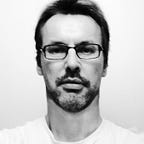Is there such a thing as an activist photographer?
The idea of the photographer as activist is an appealing one. It means that photographs really matter, that they can lead to changes in representation, attitudes and policy. Labelling photography as activism elevates the camera from being a functional tool in the service of a publisher to something altogether higher. It transforms the photographer from a shutterbug to a prophet, someone with real vision and moral standing in the world, someone with power.
In this series of posts, many photographers have distanced themselves from the term. There is an understanding that to be an activist in something involves far more than simply being concerned about something; that very often the effect that images have on public opinion, on social attitudes or even policy are limited or exaggerated. There is an understanding that to be an activist is a long-term commitment in which your life might be at risk.
There’s also an understanding that the power of photographs is limited and is part of a longer process where politicians, writers, community figures or lawyers play a greater role. Photographs didn’t end slavery, apartheid, or mercury poisoning. Photographs didn’t get women the vote and they didn’t end the Vietnam War. But photography played a part in all of these things and helped crystallise political change further down the line. What’s more, ruling powers are afraid of photography. The beatings and arrests of photographers such as Shahidul Alam during protests in Bangladesh in 2018 is just one of many examples of this fear of the potential of images to bring visual truth to power.
Photographs inspire, they turn ordinary people into heroes; they can raise money and create a focus. That was the case in the 19th century when Sojourner Truth was selling carte-des-visites to fund her anti-slavery talks. It’s true today when the iconic status of activists like Greta Thunberg is used to inspire the fight against climate change across the world. The images aren’t the struggle, but they are part of it.
If the rule is that there is no such thing as activist photography, the problem is there is always the exception that proves the rule. And in photography, the exception is Lewis Hine.
